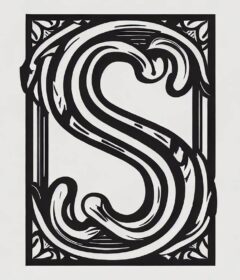Many people read my books about the 13th century, be they the Savernake Series or the more recent Kennet Valley Tales (Romance).When I think about my readers I try to get inside their heads to see what they are thinking when they read the images I’ve painted with words. Many of them I’m sure, are imagining buildings which, frankly, didn’t exist in the early 13thc century. No matter how well I try to describe the places people live and work or post photos of buildings reconstructions or otherwise, they still get it wrong.
It’s no one’s fault. It’s just the way we’ve been indoctrinated especially here in the UK. We have so many programmes about the 16th century that our consciousness has become fixed in that era.
Can I say AGAIN that the 16th century is NOT Mediaeval. The Tudors are not Mediaeval no matter how people try to convince us.
All buildings prior to the Elizabethan era…looked like the Elizabethan era…didn’t they?
No. They. Didn’t.
They weren’t all the grand palaces like Hatfield or Hardwick. They didn’t all look like Hampton Court.
And the places in which the ordinary folk lived, were not the usual black and white timbered chocolate box house, or those used in many television programmes (claiming to be Mediaeval when in fact they’re 17th century), like at Laycock or that well used village, also in Wiltshire, Castle Coombe.
So shall we cast our minds back to 1200 or thereabouts and see just what these buildings looked like.
It’s true that we have no absolutely perfect houses from the era. We do have some which have been altered and when the later accretions are stripped back, we can see the bones of the original building. We also have some which have been rebuilt and some which are replicas.
It’s true that Mediaeval houses didn’t alter much certainly between the time I write about and the later 14th century. More modern flue fireplaces might have been installed to replace the central, smoky, open fire which is ubiquitous from early times. It’s also true that extra floor may have been added with the proper staircase replacing the more ladder like steps.
But all in all they give us a good idea of what our characters have to deal with.
Two places to visit: The Weald and Downland Museum in Sussex and the Avoncroft Museum in the Midlands. Here you’ll find the right kind of buildings which should fire your imagination when reading my books.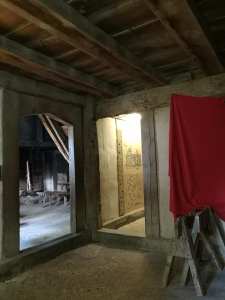


Imagine Rosalie Jourdemayne tripping into her farmhouse in Forceleap Farm. THIS is what it would look like – although perhaps a little more homely.

Here is the sort of bed in which she’d be laid up when she sprained her ankle.

This is the sort of place where all the day to day business would be done. A rather up-market house with a hall.
And another.
As to the fire…well it might look like this.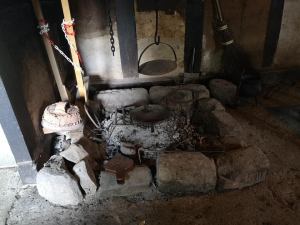
And if there was an upper storey (not always) it might look like this accessed by a ladder…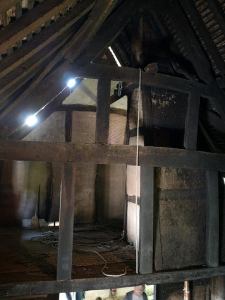
OR by a rudimentary stair like this one.
If you had money, town houses were a little more luxurious. Other than that little differed between the rural hovel and the town home.
And this would be the sort of gateway to Aumary’s manor at Durley. The only building in the village, bar the church, built in stone.

The sort of cottage most peasants lived in might have looked like these:
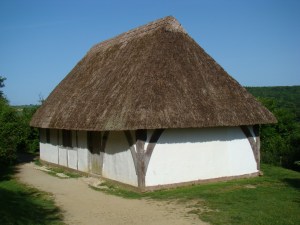
Very basic…but they were happy.
And when I visit them…so am I!
Avoncroft Museum: https://avoncroft.org.uk/
Weald and Downland Museum.: https://www.wealddown.co.uk/
Content retrieved from: https://susannamnewstead.co.uk/2021/07/09/feeling-at-home/.
